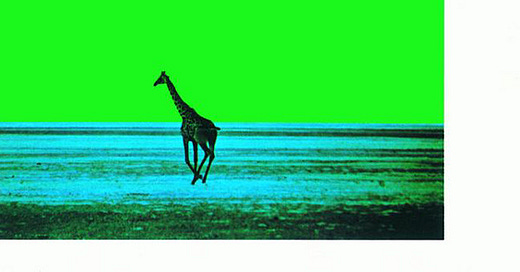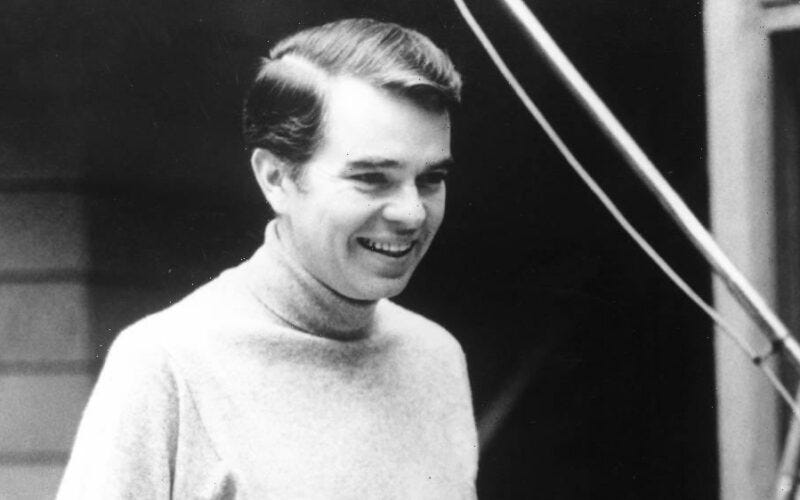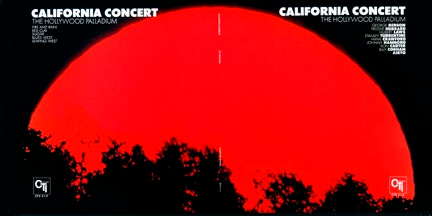Creed Taylor always had an idea that jazz music could be presented very differently from the way it was done in the fifties and early sixties when he was working for labels like Bethlehem and ABC-Paramount. First, he saw that Bethlehem, a label that was still releasing 78 rpm records, was missing out on the growing popularity of the ten inch album. But when it came to jazz, he felt that it was sloppily represented by too many jam sessions with extended groups of solos, particularly bass and drum solos. He envisioned a more structured recording, with arrangements by new young musicians and sidemen taken from a roster of jazz all-stars and amazing newcomers.
Taylor was a well-known and respected name in the jazz world long before he founded his famous CTI (Creed Taylor International) record label. Taylor began his musical career as a trumpet player but soon got into the business end of music with Bethlehem Records, where he worked as head of A&R. There he recorded artists such as Carmen McRae, Charles Mingus, Herbie Mann, and J.J. Johnson. After moving to ABC-Paramount, he founded the Impulse! label in 1960. He was there long enough to sign John Coltrane to the label. Creed’s next job was with Verve records where he was also very successful, producing Stan Getz and Joao Gilberto's famous bossa nova recording Getz/Gilberto as well as many sides by Wes Montgomery.
By this time, Taylor knew the aesthetic that he had been searching for. He wanted to work with both established arrangers and with young talent that could write charts that sounded like the music of the day. For example, on Antonio Carlos Jobim's record Wave, he hired Claus Ogerman, a veteran arranger and conductor who had worked with Frank Sinatra and Billie Holiday, to put a sophisticated sheen on top of the understated bossa nova rhythm section. For Jobim's next project, Tide, he hired young Brazilian Eumir Deodato, who was working with Luiz Bonfa and Astrud Gilberto, resulting in arrangements that are a bit heavier and structured somewhat like pop music.
Both recordings were CTI releases done under the auspices of A&M Records, with whom Taylor signed an agreement with Herb Alpert and Jerry Moss for release and distribution of CTI titles. The deal paid Taylor $1 million over five years and, according to Taylor, gave him complete control over both signing of artists and the records themselves. CTI was A&M's first affiliate label, operating independently and depending on A&M for promotion and distribution. When he signed with A&M in 1967, Taylor told Record World:
"I have a wonderful working relationship with Jerry Moss and Herb Alpert at A&M. When I want to do something, I simply call them and it gets done. No channels, no obstacles to worry about. Also what I like about A&M is that the name means so much now and yet the album catalog is small enough so that my packages get the proper attention."
In 1970 Taylor took CTI independent and helped change the jazz world both in terms of the recording of some of its most stellar musicians and in demonstrating that jazz could achieve better sales and visibility than many in the business had thought possible.
Some independent label owners began to see the value of extending their branding to the album cover art itself. This was especially true in the jazz field. Creed Taylor developed a presence for Impulse! that included an orange spine, cover fonts and the work of a certain group of photographers, all designed to make his label’s records stand out both in record shops and on the record buyer’s shelf. Taylor was partially inspired by existing jazz labels such as Blue Note, who used the photography of Francis Wolf to solidify a brand and give the listener a definite feeling about the kind of music that was likely to be found inside.
Taylor's attempts to achieve an aesthetic for jazz releases that would catch both the eyes and ears of record buyers inspired a young photographer who Taylor would later hire to help create many of the unique photographs that were used on CTI releases, Pete Turner:
“On the weekends, when I was in the army, I used to go into Manhattan. I’d take photographs for my portfolio and then go to record stores and look through the bins. I thought record covers were pretty interesting. Each time I’d run through the albums I’d see head shot after head shot on the covers. But every so often, an album cover would stand out. When I’d turn the album over to see what was going on, the album had Creed Taylor’s name on the back…”
Whereas the A&M/CTI releases featured Turner's photography in a square shape framed by a white album background, Taylor's independent CTI releases featured Turner's stunning color photos splashed across the entire album cover, sometimes spilling over the spine and onto the back cover. These releases had a gatefold sleeve containing all of the personnel and session information and, occasionally, some brief notes.
The sleeves caught people's attention on record store shelves, but what really caught their attention was the sound of the records themselves. Lush orchestrations featuring horns and strings were frequently written by Don Sebesky, though not every record used them. Sometimes it was enough to get a group of undisputed jazz masters into the studio and let them play. Freddie Hubbard's Red Clay, one of four he recorded for the label, uses this approach, with a quintet comprised of Hubbard, Joe Henderson, Herbie Hancock, Lenny White, and Ron Carter. Carter basically became the house bassist for CTI--it's more difficult to name the records on which he did not play than those on which he did.
Creed Taylor and CTI are often cited as paving the way for smooth jazz or creating smooth jazz. While there's no question that Taylor demonstrated that his aesthetic could help move jazz records in an era when jazz had been supplanted by rock and soul music, but he did it without capitulating to the youth music marketplace. Whereas Mile Davis and others seemed to work at creating music that would be defined as rock or jazz-rock fusion, Taylor started from the home base of jazz music, adding electronic instruments or rock-oriented rhythm sections or orchestrations as seasonings in the soup. He didn't force artists to record records meant to appeal to teenagers or clients at the local discotheque, he allowed them to record in the style they wished and supported them with excellent, appropriate backup musicians and arrangers, and, of course, his production work. Freddie Hubbard would later record dance-funk oriented music that was clearly a play for sales, but his four CTI records still show his playing clearly linked to the language of bebop and post-bop jazz from the preceding decades.
CTI also managed some hit records, with Deodato's funky version of "Also Sprach Zarathustra" hitting No. 2 on the Billboard Hot 100. Other successes included Bob James' singles "Feel Like Making Love" and "Westchester Lady" as well as Esther Phillips' disco-fied "What a Diff'rence a Day Makes" and Grover Washington, Jr.'s albums Mister Magic and Feels So Good. Taylor created the Kudu imprint to release some of these more soul jazz-oriented outings.
Of course there were naysayers. Listeners whose tastes ran towards straight ahead post-bop or in the Coltrane ascent towards free jazz or the heavier electric work that Miles Davis was working on found CTI records to be 'jazz lite' or easy listening. CTI has been credited with ushering in the smooth jazz genre, and there's certainly some truth to that. Guitarist George Benson's CTI recordings were frequently lauded by fans and critics who saw him as the next generation Wes Montgomery. But when Tommy LiPuma took Creed Taylor's formula to the next level with the Breezin' album, many turned their backs on Benson.
In a 2014 interview with Red Bull Music Academy, Benson had this to say about working with Taylor:
I’ve never agreed with a lot of producers, but after working with Creed adTaylor I realized it was important to at least hear them out, see what he’s talking about. Working with Creed, we were partners. Every now and then we ran into a problem, but I learned to let him have his say...Creed didn’t like my voice though, so he didn’t like when I wanted to sing."
Major mistake.
Creed Taylor had a lot to say and was a profound influence on jazz music, both in its recording and marketing, at a crucial time in its history. Head over to our CTI Records page for more information on this influential label. Coming shortly are some reviews, both legacy and new, of CTI records and reissues. More info in my next newsletter.







Beautifully-written, Marshall, and a memory-puller for me! I remember Taylor and CTI from a couple points in my life/career: Being forever surrounded by Dad's 20,000 (mostly) jazz LPs and 78s (where I first discovered the label and Taylor's artists), neatly stored in custom-made cabinetry, floor-to-ceiling and wall-to-wall, while growing up, '50s thru early '70s!
Then, in the late '70s, selling CTI product in my Houston record store! I did not know CTI was distributed by A&M in the late '60s. Nice to know, and not surprising, Alpert & Moss were efficient and compliant as bosses!
A note about George Benson...LiPuma produced him after George moved to Warner Bros., which is apropos of nothing other than to understand the label of The Bunny had to be more aware of, and in pursuit of, profits than did CTI. The few hits CTI did have I'm sure Taylor didn't discount, as he used that success to give other less-commercially-viable artists a shot on the label.
The move of Benson to WB helps to underscore the "minor-league" to the Bigs parallel the record biz was littered with back in the day. Looking at you, Freddie Hubbard, Herbie Hancock (to WB briefly), Bill Withers, Earth, Wind & Fire (also a brief foray on WB, early '70s)---all to CBS from smaller labels!
I enjoyed the look at the importance of artwork Taylor had, and implemented for his label! In short, mega-kudos...a thoroughly enjoyable piece, Marshall!